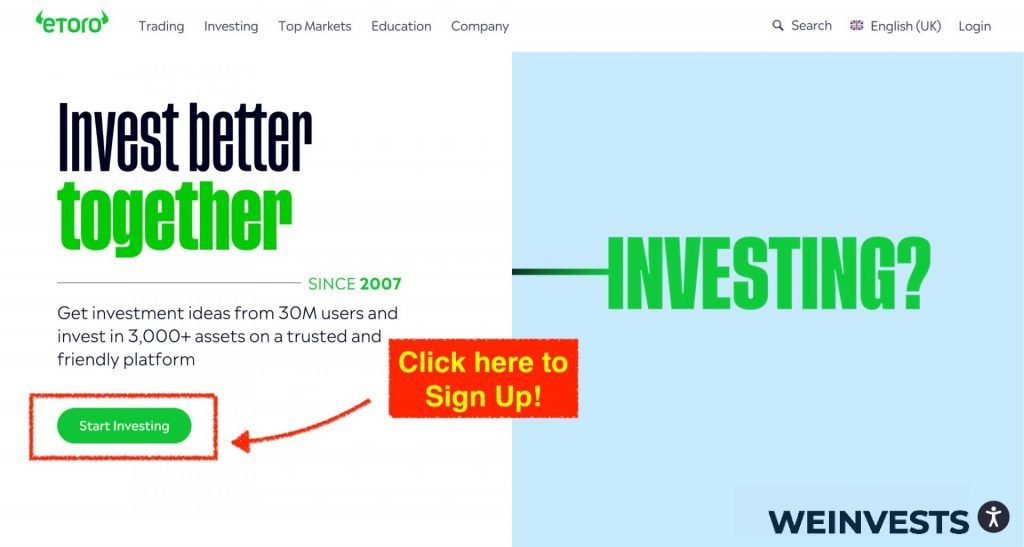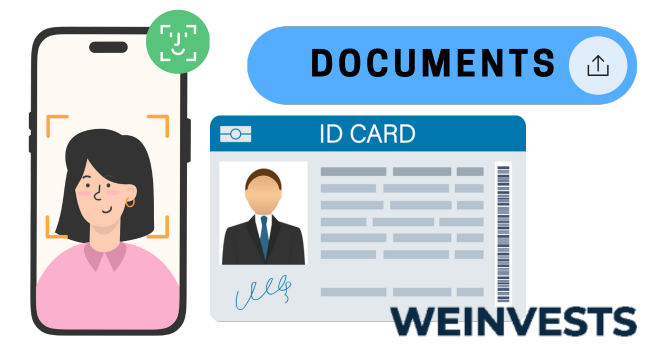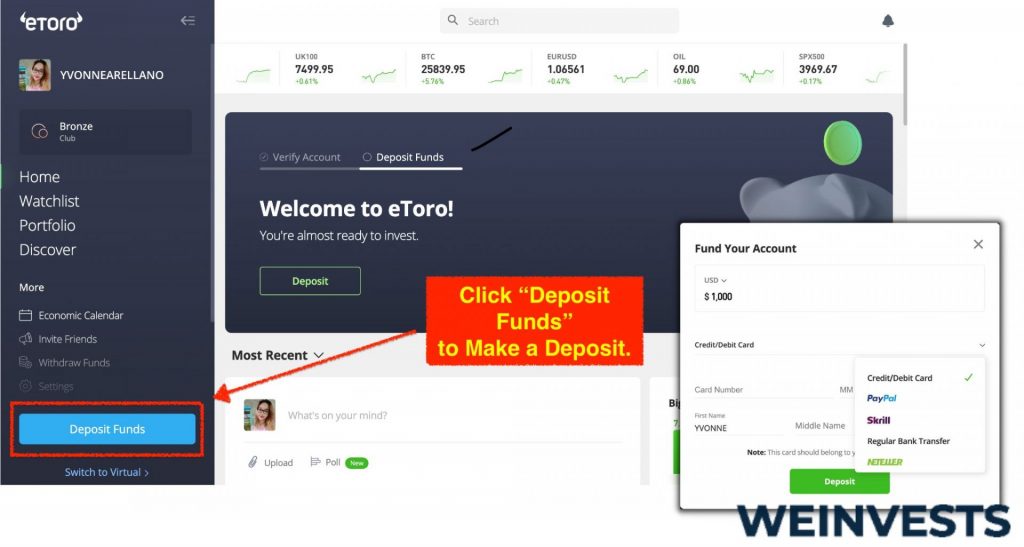This content represents the writer’s opinions and research and is not intended to be taken as financial advice. The information presented is general in nature and may not meet the specific needs of any individual or entity. It is not intended to be relied upon as a professional or financial decision-making tool.
When there are so many investment options out there it might be intimidating to figure out what are the best alternatives especially when you are not specialized in the financial markets. This article aims at covering the top 5 bond exchange-traded funds (ETFs) available in the market by comparing their characteristics, expenses, and risks involved. By the end of this article, you should have an understanding of what bond ETFs are, why you should include them in your portfolio, what the top bond ETFs are at the moment and what to look for when choosing bond ETFs.
Table of Contents
What are bond ETFs?
Before jumping into the definitions and understanding what bond ETFs are, we should first figure out what ETFs are overall and why they gained so much popularity in recent years.
ETFs or exchange-traded funds, as the name suggests, are traded on the stock market like stocks and are pre-structured portfolios that try to track or outperform the performance of a benchmark which is usually a market index. Thus ETFs help investors to gain broad exposure to specific assets or sectors by investing in one financial instrument, rather than picking stocks or bonds individually to structure a portfolio which is a time-consuming and expensive practice.
ETFs are divided into two categories passively managed and actively managed. Passively managed ETFs try to replicate the benchmark performance without trying to outperform it. Thanks to this they can offer ETFs with relatively small management fees which is why these instruments gained so much popularity in the investment community. On the other hand, actively managed ETFs try to outperform the benchmark by betting on the market’s directionality. Thus they usually come with higher management costs since the human aspect is more involved than in the case of passively managed ETFs.
Bond ETFs are nothing else but a sub-category of the broad ETF market that are focusing on one asset class – bonds. The attractiveness of bond ETFs and ETFs overall is that you can get diversified exposure to several instruments with one investment. In the case of bonds, it might be difficult to invest in some instruments due to market illiquidity or high up-front investment requirement in some cases which bond ETFs help you to overcome.
Top 5 Bond ETFs
Many asset managers offer bond ETFs, but when it comes to our top 5 picks, below are listed the most popular names in the market and we will analyze the reason behind their vogue.
- iShares Core U.S. Aggregate Bond ETF (AGG)
- Vanguard Total Bond Market ETF (BND)
- iShares iBoxx Investment Grade Corporate Bond ETF (LQD)
- iShares Short-Term Corporate Bond ETF (IGSB)
- iShares iBoxx High Yield Corporate Bond ETF (HYG)
Below we provide a short description of the top 5 ETFs with key characteristics worth considering before investing. On top of the below information, you should gather further details regarding the risks and rewards of the fund before making any investment decision.
iShares Core U.S. Aggregate Bond ETF (AGG) is a bond ETF that passively tracks the performance of the Bloomberg Barclays U.S. Aggregate Bond Index. The benchmark and thus the AGG ETF, include a wide range of investment-grade bonds issued by U.S. government agencies – currently being close to 70% of the fund holdings, and companies – making the remaining part of the portfolio, giving investors a diversified exposure to the U.S. bond market. The fact that it is managed passively means that AGG tries to replicate the performance of the benchmark rather than trying to beat it through active management.
Currently, the net cost of the fund stands around 0.03% which is significantly below the overall ETF industry average range of 0.2-0.4%. Traded around USD 100 per share at the moment AGG has total net assets of about USD 87 billion. The fund contains more than 10,000 bonds in the portfolio with the weighted average maturity standing at around the 8.5-year part of the yield curve. The weighted average coupon of the fund is around 2.7% at the moment we write this.
Vanguard Total Bond Market ETF (BND)
The Vanguard Total Bond Market ETF (BND) is a bond ETF that also replicates the performance of the Bloomberg Barclays U.S. Aggregate Bond Index. Since the benchmark is the same as for AGG, BND also includes similar composition of underlying bonds from investment-grade U.S. companies and government agencies. Similar to AGG, it is a passively managed fund, so there are no active market bets involved in the management of the fund.
The expense ratio for BND is similar to its peer – at 0.03% at the moment. It is traded at around USD 74 per share at the time being with total net assets of USD 280 billion making it one of the largest bond ETFs globally. BND includes more than 10,000 bonds in the portfolio with the average effective maturity being slightly longer than its peer at around 9 years and the average coupon payment slightly higher at 2.8%.
The iShares iBoxx Investment Grade Corporate Bond ETF (LQD) is a bond ETF that tracks the performance of a custom index with a U.S. investment grade corporate bond built by iShares. Currently, its top 5 compositions are made by – 25% of bonds from the banking sector, 17% from consumer non-cyclical, 12% from communication, and 12% from technology. Unlike AGG and BND, LQD is focused exclusively on corporate bonds, which are issued by companies rather than government agencies. However, similar to its peers LQD is also a passively managed fund.
The expense ratio for LQD is 0.14%, which is higher than BND and AGG, but it is still considered a low expense ratio compared to the industry average. LQD is currently traded at USD 110 per share, while the total net asset value of the fund is around USD 40 billion which is lower than the peers but still considered a relatively large fund. Unlike competitors, the fund has fewer holdings at around 2,600 at the moment with the weighted average maturity of the ETF being around the mid to long end of the curve – 13 years area. The fund has a weighted average coupon of 3.8% for the time being. Since LQD is focused exclusively on corporate bonds, it may be a good choice for investors looking for more targeted exposure to the corporate bond market.
The iShares Short-Term Corporate Bond ETF (IGSB) is a bond ETF that similar to LQD tracks the performance of a custom US-denominated corporate bond index. This index includes US corporate bonds with short-term maturities between 1-5 years from which the top 5 sectors are banking – 37%, consumer non-cyclical – 10%, consumer cyclical – 8%, technology – 8%, and energy 5% for the time being. Like LQD, IGSB is focused exclusively on corporate bonds, but more concentrated on the short-term part of the yield curve. It is also a passively managed fund similar to its peers.
The expense ratio for IGSB is 0.04% which is lower than LQD but slightly higher than AGG and BND. At the moment the price per share of IGSB is around USD 50 with a total net asset value of USD 24 billion – lower than the counterparts in both cases. It has more than 3,500 instruments at the time we write this, with a weighted average maturity of 3 years and a weighted average coupon of 3.2%. Due to the focus on short-term bonds, IGSB may be a good choice for investors looking for a more targeted exposure to the corporate bond market, with a focus on the short end of the yield curve.
The iShares iBoxx High Yield Corporate Bond ETF (HYG) is a bond ETF that tracks the performance of a custom index focused on US high-yield corporate bonds. This index includes a wide range of non-investment grade bonds issued by U.S. companies, also known as high-yield bonds or “junk bonds”. These bonds carry a higher level of credit risk compared to investment-grade bonds, but they also offer higher yields. Currently, the top 5 sectors involved in the ETF are consumer cyclical – 21%, communication – 18%, consumer non-cyclical – 13%, energy – 11%, and capital goods 10%. It is also a passively managed fund similar to its peers.
The expense ratio for HYG is 0.48% at the moment, which is higher than the other ETFs mentioned. The fund is currently trading at USD 76 per share with the total value of the fund at USD 18 billion. The fund has more than 1,000 bonds in the basket with a weighted average maturity of 5 years and a coupon of 5.6%.
What to look for when you want to invest in bond ETFs?
There are several factors you need to consider when investing in bond ETFs.
- The current economic and geopolitical situation as well as the outlook – bond markets and thus bond ETFs are assumed to be relatively low volatility and stable investments. Historically they worked as a solid hedge to equity portfolios. However, since the COVID pandemic and geopolitical tension the negative correlation that everyone was talking about failed to hold causing lots of portfolios to lose a significant amount of money. If you look at the performance for 2022 for the bonds they are also in the bear market similar to the equities but with less magnitude. So the economic outlook for the short or long term should be considered before investing in bond ETFs.
- Inflation and interest rates – since the high inflationary environment together with the aggressive rate hikes from the central banks were one of the driving forces for the bond market performance in 2022 it should be thoroughly examined when making a decision. Although we are seeing a slowdown in inflation which might mean relatively less aggressive rate hikes from the central banks, we should still expect the hikes which are going to harm bond prices.
- Bond ETF characteristics – you need to analyze the current characteristics of the bond ETFs before investing such as the expense ratio, average maturity or coupon rate, historical performance and holdings of the fund together with other relevant metrics since those change over time. Depending on your investment goals there might be different metrics that you need to look at prior to investing.
What are the risks involved with investing in bond ETFs?
Several risks should be taken into account before investing, however, the most pronounced ones are the market risk – the risk of market factors moving against your investment such as rising interest rates for bonds, and credit risk which is the risk of the counterparty failing to pay the obligations such as coupons or face value of the bond at maturity. These two are the most important risks, however, there are others to be considered such as liquidity or valuation risks to name a few.
Where to trade bond ETFs?
The first alternative is to check with your banking service provider whether it offers a brokerage account that enables trading in the bond ETFs. Alternatively, you can look for online brokerage platforms such as eToro or others which in some cases provide cheaper services together with innovative solutions to trade in financial instruments. The decision is based on your location and available services to be considered.
Where to Trade Bond ETFs?
eToro is a highly reputable online broker that offers a user-friendly platform with a wide range of options for both beginners and professional traders. In this mini-guide, we will walk you through the process of opening an account on eToro and investing in the best bond ETFs.
Step 1: Open your Personal Account
To get started with eToro, you’ll first need to open an account. Navigate to the eToro homepage (https://www.etoro.com) and click on the “Sign Up” or “Join Now” button. You will then be directed to the registration page, where you’ll be asked to provide some basic personal information, such as your name, email address, and phone number. After completing the form, you’ll need to create a username and password. Once you’ve successfully registered, you will receive a confirmation email with a link to verify your account.

Step 2: Upload ID
Before you can start trading on eToro, you will need to verify your identity by uploading proof of ID. This can be a government-issued identification document, such as a passport or driver’s license. To upload your ID, log into your eToro account and navigate to the “Settings” section, then click on “Account Verification.” You will be guided through the process of uploading a clear, color copy of your ID. Keep in mind that it may take a few days for eToro to verify your information and approve your account.

Step 3: Make a Deposit
Once your account is verified, you’ll need to fund it before you can start trading. To deposit funds, log into your eToro account and click on the “Deposit Funds” button, usually located at the bottom left of the screen. You’ll then be prompted to choose your preferred payment method, such as credit/debit card, PayPal, or bank transfer. Select the method that works best for you and enter the amount you’d like to deposit. Keep in mind that eToro may have minimum deposit requirements, which can vary depending on your region and payment method.

Step 4: Search for Bond ETFs
eToro has a wide selection of ETFs, and if you have something particular in mind, you can use its search bar to find it quickly. After you identify the ETFs you’re looking for, you can hit the “trade” button to initiate your order. In addition, you can use the available features to determine the stop-loss and take-profit price prices, thereby automating your trading – an important element, if you don’t want emotions to influence your trading activity.
WeInvests is a financial portal-based research agency. We do our utmost best to offer reliable and unbiased information about crypto, finance, trading and stocks. However, we do not offer financial advice and users should always carry out their own research.
Read More



